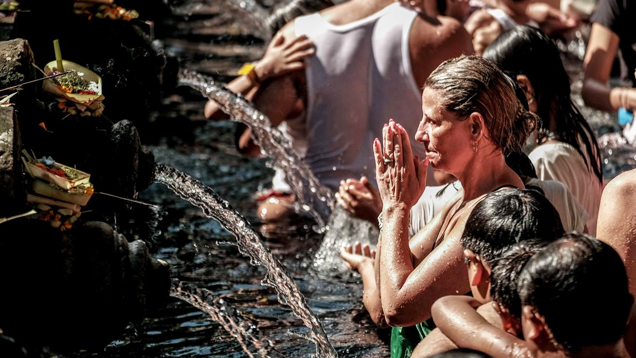NICKNAMED as the ‘Island of the Gods,’ Bali is not just a tropical paradise but also a land rich in spirituality and cultural traditions. Among the many aspects of Balinese Hinduism that captivate travelers, Canang Sari and Melukat stand out as unique and deeply meaningful spiritual practices.
These rituals do not only serve religious purposes but also attract visitors seeking cultural experiences, personal reflection, and spiritual healing.
Meaning of Canang Sari
One of the first things visitors notice when exploring Bali is the presence of small, colorful offerings placed in front of homes, temples and businesses. These are Canang Sari, daily offerings made by Balinese Hindus to express gratitude to the gods and maintain harmony between the spiritual and physical worlds.
The word Canang refers to the small palm-leaf basket that holds the offering, while Sari means essence, symbolizing the sincerity behind the ritual.
What’s Inside a Canang Sari?
A Canang Sari is made up of a number of ingredients as follows:
- Young Coconut leaves folded into a small basket
- Flowers in different colors, each representing different Hindu deities
- Betel leaves, lime, and tobacco as symbols of life balance
- Incense sticks, which carry prayers to the divine
These offerings are carefully arranged and placed in various locations, often accompanied by a small prayer and a sprinkle of holy water.
Why Travelers Find Canang Sari Fascinating
Tourists are drawn to Canang Sari for its artistic beauty and its deep cultural significance. Many hotels and cultural workshops offer Canang Sari-making classes, allowing visitors to participate in this daily act of devotion and learn more about Balinese Hindu philosophy.
A Sacred Cleansing Ritual for Body and Soul
What is Melukat? Melukat is a spiritual purification ritual in Bali, performed with holy water to cleanse the mind, body, and soul from negative energies. The word ‘Melukat’ comes from the ancient Javanese term ‘lukat,’ meaning “to cleanse or release.” This ritual is often performed at sacred water sources such as temples, rivers, or waterfalls.
Where to Experience Melukat?
Travelers seeking a spiritual experience often visit Tirta Empul Temple, one of the most famous water temples in Bali. Here, they can immerse themselves in the temple’s holy spring water, following the same purification steps as the locals. Other popular Melukat sites include:
- Pura Tirta Sudamala in Bangli
- Sebatu Holy Spring in Gianyar
- Gunung Kawi Sebatu Temple, known for its peaceful surroundings
- Other spring temples
Why Melukat Appeals to Travelers
In an era where wellness tourism is booming, many visitors come to Bali in search of healing and inner peace. Melukat offers not only a unique cultural experience but also a profound emotional and spiritual release. Travelers often describe feeling lighter and more refreshed after the ceremony, making it a sought-after ritual for those on a personal journey of transformation.
Bridging Tradition and Tourism
Balinese spiritual practices like Canang Sari and Melukat have become more than just religious rituals—they have also enriched Bali’s tourism industry. Many wellness resorts and cultural centers now incorporate these traditions into their programs, offering:
- Guided Canang Sari-making workshops
- Personalized Melukat experiences with a Balinese priest
- Spiritual retreats combining yoga, meditation, and purification rituals
These activities allow travelers to connect with Bali’s sacred traditions in an authentic and meaningful way. (*)










